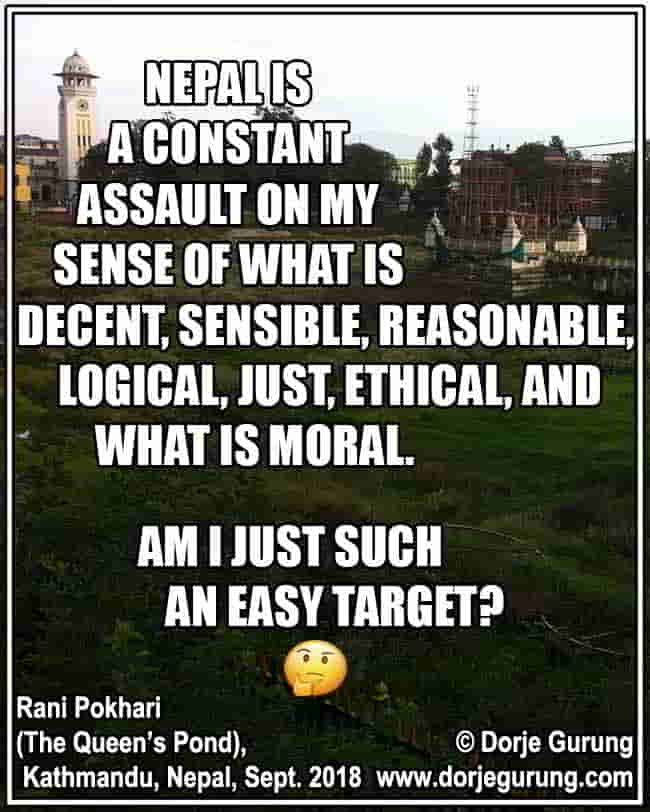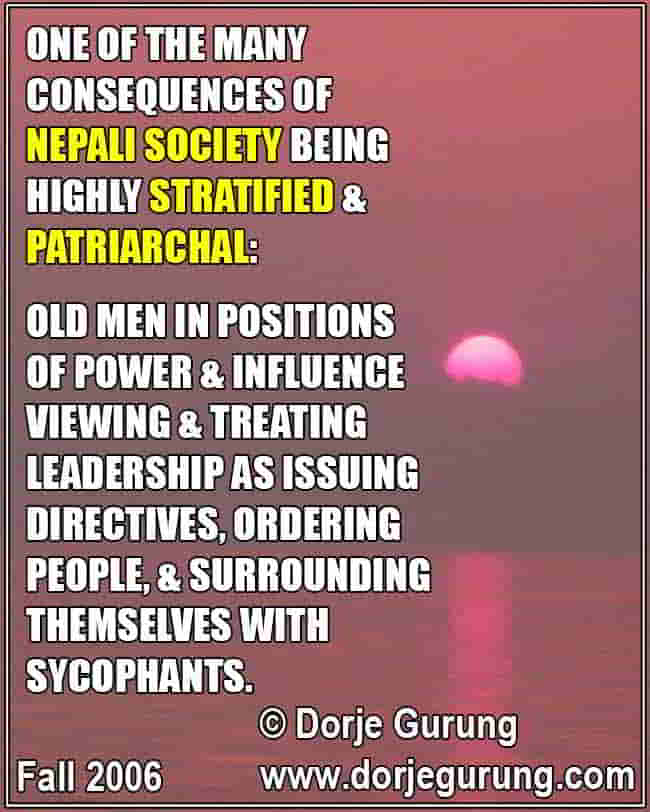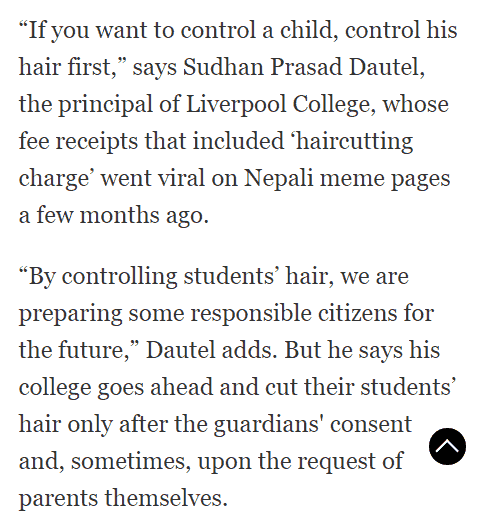Ever wondered why, in Nepal, we still have the kind of dinosaurian bureaucracy that we have always had?
Ever wondered why we still have the kind of abysmally poor quality of education we have pretty much always had since education was made available to the public about seventy years ago?
Ever wondered why the State of Nepal has systems and procedures that hinder and obstruct instead of facilitate most things citizens of the country needs to do with the help of State structures and organs?
Do you know why we have systems, structures, beliefs, practices, protocols etc. that are just a constant assault on our sense of what is right, good, etc. and just boggles the mind?
Ever wondered why we have had the kind of leaders we have always had — the kind who believe leadership is about issuing directives, ordering people, and surrounding themselves with sycophants?
Ever wondered why our government and many organs of the State (such as the Army, the Police, etc,) are mostly exclusive and opaque and not forthcoming with the latest and useful information and updates about their activities EVEN during times such as the aftermath of the 2015 quakes, the economic embargo towards the end of that same year, and of late during these times of the coronavirus pandemic?
Why are most state bodies unaccountable to the public and all indications are that they really don’t care that they are unaccountable to those who pay their salaries?
The information about the inner working etc. of State organs available to the public since 1990 has been because of the efforts of the citizens and NOT of the State. Even now, even with a democratic form of government running the country since 1990, it has been amply clear that those in positions of power and influence operate in the ways the rulers of old — those prior to 1990 — did.
The feudalisitic Rana oligarchs exerted total control over the population for over a century. The Shah dynasty that took over the reins once again also exerted control over the population for almost half a century more before they were toppled in 1990. However, the mentality of the privileged statesmen and others with power and influence, benefiting from the legacy of that history and coming from the same stock of social group as they do, even in the democratic republic are not much different.
The privileged and those in positions of power and influence still view breaking the law, cheating and exploiting the rest of the population, as well as plundering the resources of the country as pretty much entitlements. To facilitate that, systems, structures, and procedures of obstructions etc. are STILL in place to gag those with little to no voice and exploit the most vulnerable.
Part of the reason and explanation behind all that is that Nepal is a closed and inward-looking society!
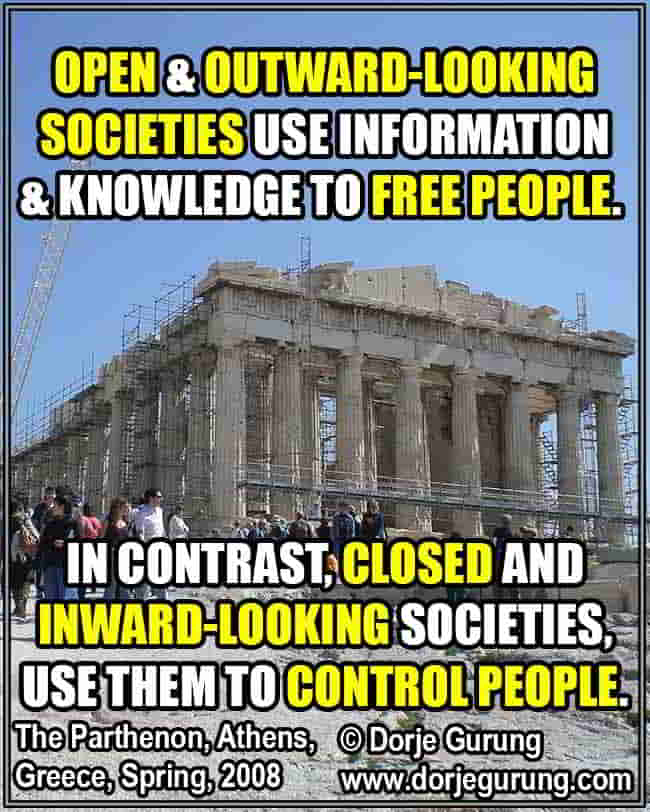
What does being closed and inward-looking mean anyway?
Being closed as an individual means having — and believing in — a narrowly defined identity mostly for lack of knowledge and understanding about not just other people of different culture, nationality, etc. but also for lack of knowledge and understanding about themselves as human beings. Closed people have an unhealthily strong and intimate attachments to — and invest a lot of time and energy in “protecting” — that which is associated with their limited identity, notably their ethnicity, caste, race, gender, sex, or sexuality, culture, religion, or nationality etc.
Lacking in any significant knowledge and understanding of and experience with others — people of different culture, religion, sexuality, nationality etc. — closed people are inward-looking. They over-inflate the value their culture, their religion, their beliefs, their practices etc. They rely on them — or use them — to explain life and the world. They use them to guide not only their practices but also major life choices and decisions. Science does NOT play anywhere near as big a role as religion does in them.
Consequently, closed people have an unhealthy “fear” of the unknown, fear of the “them” — people of other ethnicity, other caste, other race, and their culture, their religions, their traditions etc. Pretty much every “explanation” for who and what oneself and others are etc. are based on their limited understanding and views of life and the world. Closed and inward-looking people therefore resist assimilation, accommodation — or entertaining readily — alternative ways of viewing life, the world, and alternative ways of doing things, or alternative beliefs, alternative ways of thinking, and being etc. Part of the reason behind that is also because they can’t.
Forget all that; many fear others and what others represent, naturally (see below).
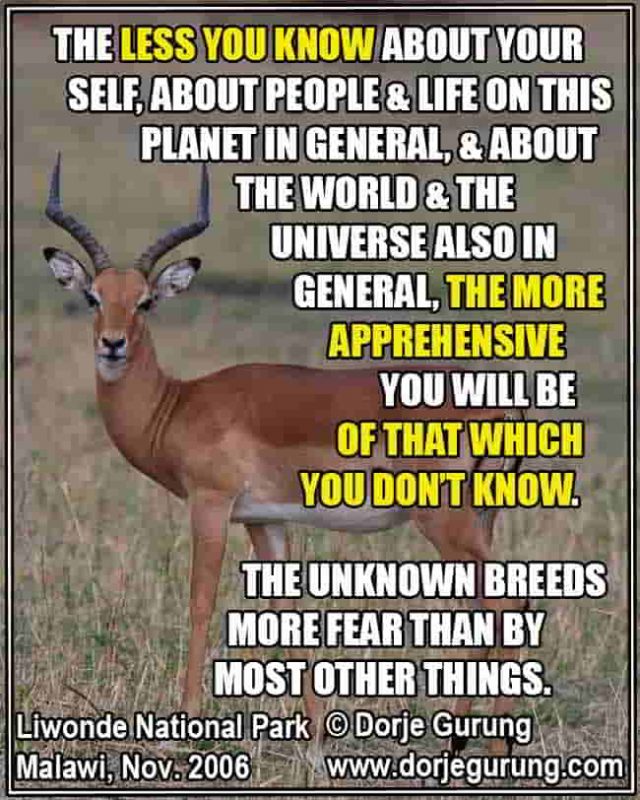
When a vast majority of the population are such, then you have a closed and inward-looking society. Nepalis society is but one example of just such a society. That we are such a society is not an accident.
In Nepal, who we are and how we are — as a people, society, and State — is deliberate. It’s a result of control exerted on the people by those in positions of power and influence. Of course, that control of people — and instilling fear of a myriad of things and other people etc., including even of some fellow Nepalis — starts in schools and extends all throughout the rest of the lives of the population, especially control of of females, the young, and those from marginalized communities.
For one of the ways that happens in an academic institution, let’s hear it from the Principal of Liverpool (!) College!
Most educators in Nepal, of whom Dautel above, I dare say, is a quintessential example, are highly concerned with how to “discipline” and control students, instead of how to free their minds. Apart from controlling and dictating something as inconsequential to education as the length of hair of students, many aspects of school culture in Nepal are geared towards just that.
Every school holds assemblies every morning for example. The students are required to stand out in the open, even on summer days with bright and harsh sunlight beating down on them, causing some to faint, and sing the national anthem among other things. Many schools have what’s called a discipline-in-charge (DIC!) whose responsibility is to enforce many inane school rules and regulations to keep the students “in line,” including through the threat of — or real — verbal, emotional, and physical violence. Violence, of course, is a tool of control, and as such also widely prevalent in homes. As far as those belonging to the marginalized groups are concerned, we are a police State too!
Taming and reining in children, our education system — both formal and informal — is essentially in the business of raising sheep instead of EDUCATION. We end up producing a lot of highly insecure followers — mostly “Yes” men to mediocre and incompetent, old Khas-arya men “leaders.” Were you to hold up the proverbial mirror in front of Nepalis, more often than not, they’ll shatter it instead of reflecting on what they see (excuse the pun).
Is it any wonder so many Nepalis display blind patriotism?! Is it any wonder that a vast majority of Nepalis fail, as adults, to discover anything approximating their true human — HUMAN — potential?!
Of course, if the State and those in positions of power and influence don’t control information, knowledge, and the people — and keep the society closed and inward-looking — thus, they know that they’ll be unable to continue to gaslight, manipulate, and rule over them.
What do you think?
References
Not referenced in the blog but shared after the publication of the blog post because of their relevance.
The Record (April 4, 2021). St Mary’s School grapples with sexism, homophobia, and body shaming. It all started with hair lengths of girls. {Added on April 4, 2021.]
Samayabhayo (About Time) (April 24, 2021). Educational Institutions and Body Policing in Nepal. This is a two-hour-long video of webinar on the subject. Many of the personal testimonials and information about how female students in Nepali schools are controlled are highly insightful, many also shocking and appalling. [Added on April 28, 2021.]

